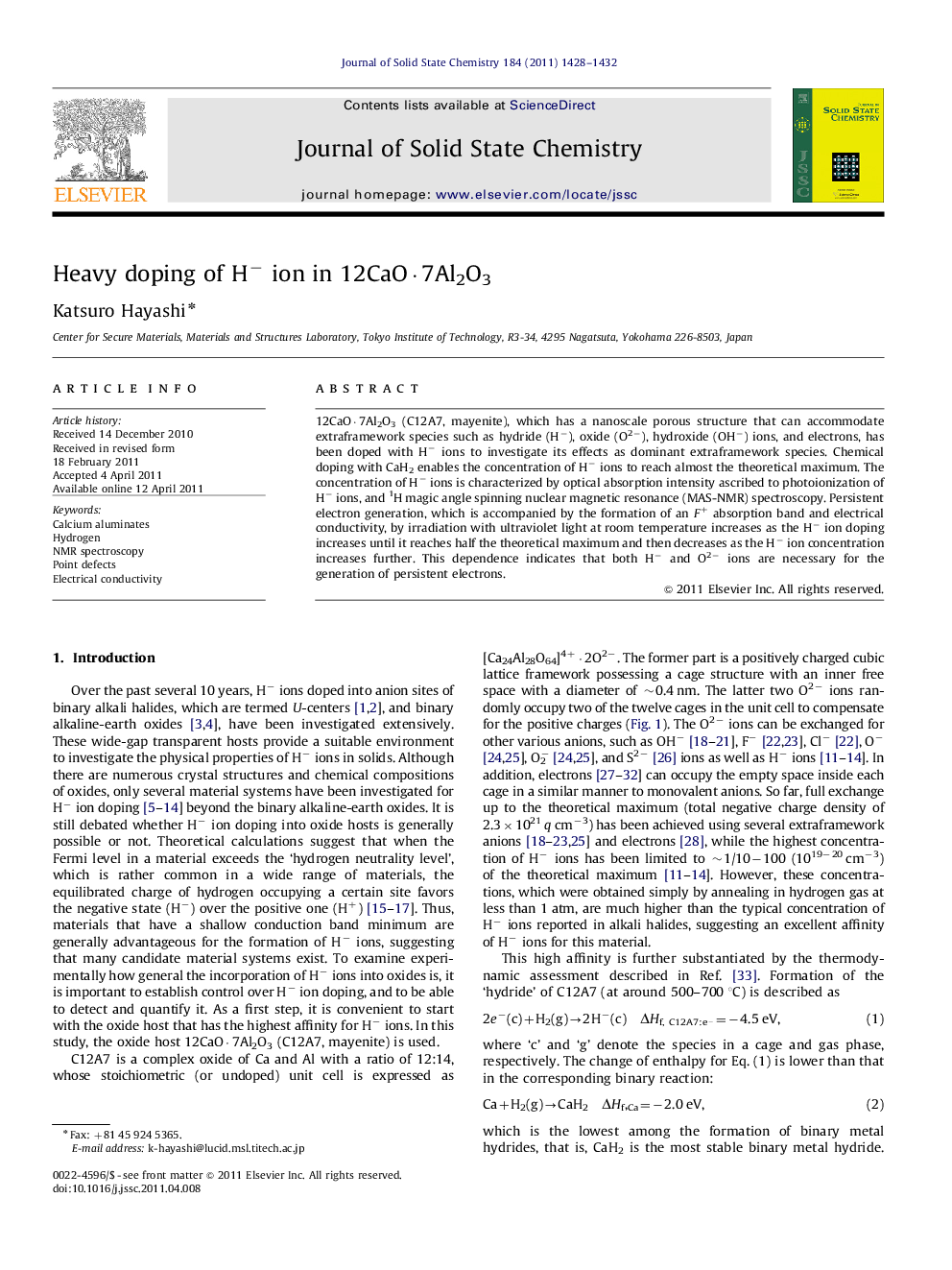| Article ID | Journal | Published Year | Pages | File Type |
|---|---|---|---|---|
| 1329118 | Journal of Solid State Chemistry | 2011 | 5 Pages |
12CaO·7Al2O3 (C12A7, mayenite), which has a nanoscale porous structure that can accommodate extraframework species such as hydride (H−), oxide (O2−), hydroxide (OH−) ions, and electrons, has been doped with H− ions to investigate its effects as dominant extraframework species. Chemical doping with CaH2 enables the concentration of H− ions to reach almost the theoretical maximum. The concentration of H− ions is characterized by optical absorption intensity ascribed to photoionization of H− ions, and 1H magic angle spinning nuclear magnetic resonance (MAS-NMR) spectroscopy. Persistent electron generation, which is accompanied by the formation of an F+ absorption band and electrical conductivity, by irradiation with ultraviolet light at room temperature increases as the H− ion doping increases until it reaches half the theoretical maximum and then decreases as the H− ion concentration increases further. This dependence indicates that both H− and O2− ions are necessary for the generation of persistent electrons.
Graphical abstractCaH2 reduction markedly enhances H− ion doping in 12CaO·7Al2O3. The H− ion incorporation is evaluated using optical absorption and 1H-MAS-NMR spectra. Both H− and O2− ions are responsible for photogeneration of electrons.Figure optionsDownload full-size imageDownload as PowerPoint slideHighlights► CaH2 reduction markedly enhances H− ion doping in 12CaO·7Al2O3. ►The H− ion incorporation is evaluated using optical absorption and 1H-MAS-NMR spectra. ► Both H− and O2− ions are responsible for photogeneration of electrons.
